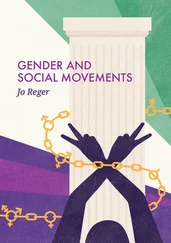1 ...6 7 8 10 11 12 ...16 In the following section, a feature of the language used by magazine writers to answer the girls’ questions is pointed out to show that they adopt –as Currie (1999) claimed- a personal form of address, as if they were peers, to gain their readers’ confidence by making them think they belong to the same group.
5.2. BUILDING RAPPORT
Upon an analysis of the discourse found in these magazines, a characteristic that is prominent in the magazines studied, both in Spanish and in English, is the use of a series of linguistic devices that show empathy with readers, so that writers connect with readers who demand advice on their intimate life. With this aim in mind, the language that teenzine writers use contains many features normally associated with informal spoken language, particularly that of adolescent language, instead of the more formal and distant register that is more frequently used in writing, specifically if addressed by an adult (not to mention if the writer is a professional, e.g. a psychologist).
Linguistic features found in magazines that reinforce the writers’ membership in that community are: a) Colloquialisms (e.g. “Vanessa tiene un curriculum ¡que lo flipas!” [Vanessa has an amazing CV/ a CV you can get mad on], Super Pop; “dump him”, Latinitas ); b) abbreviations or clippings (e.g. profe, profa [professor/-a, teacher], BF , for boyfriend); c) interjections (¡Hey!, in Super Pop ; shhh, your zzz’s, er , in Girls’ Life ); d) language loans (e.g. “pero ¡no problem!”, Super Pop ; “some new pals, chica”); e) abundant exclamation marks, even in mid-sentence; these are particularly prominent in Spanish (e.g. “Y si no funciona… lo mejor que puedes hacer es ¡pasar de él!” [And if it doesn’t work … the best think you can do is dump him!]); f) other in-group markers (e.g. “Tranqui, ¡que estas cosas pasan!” [Relax, these things happen], Super Pop ; “how can any of us know how someone else feels?” , Girls’ Life) .
According to Cornbleet and Carter (2001: 95), adopting an informal spoken style in writing has a purpose which combines three different factors. First of all, the writer adopts a “voice” to set up a dialogue with the reader, and, thus, sounds human instead of distant and impersonal; secondly, the reader is drawn into the textual world, making his/her resistance harder; and, thirdly, the language used addresses the reader as an individual, rather than as part of a crowd, making him/her feel included and less intimidated. Adopting this kind of style makes language a “very powerful tool” (Cornbleet and Carter 2001: 95).
Since an atmosphere of camaraderie is created throughout the magazine, the directive function used for advice is both more effective and less threatening. Aforementioned Bok’s survey (Currie 1999: 41) concluded that young women readers needed a confidante to replace mothers in this role, and, thus, he devised the advice column for female readers under the pseudonym “Ruth Ashmore”. This confidante role seems to be still in vogue nowadays since the advice column is one of the preferred sections in teenzines (Currie 1999, 2001). By adopting the language typically used by youngsters, this confidante sounds like a peer, nor someone in a dominant position, like it is the case of parents or teachers. This peer-like adviser sounds less threatening and, consequently, more likely to be trusted (who would distrust a friend?). All these devices that resemble adolescent language can be considered positive politeness strategies (i.e. solidarity strategies) because they are ingroup markers, which help to build rapport, a very powerful tool for persuasion (Goleman 1998: 170).
6 Conclusions
In order to draw the main conclusions obtained from the analysis of advice columns in female adolescent magazines regarding how gender is enforced in this sort of publications, let us recall the research questions that guided this study:
1. What issues are raised by girls in teenzine advice columns? How do the concerns depicted in these texts contribute to enforce gender?
After the examination of the questions posed by girls in the advice columns selected, it became apparent that their most prevalent concern in both Spanish and American magazines is their love affairs and the only kind of romantic relation dealt with is the heterosexual one. However, there were some cultural preferences regarding the focus of other types of advice: whereas American girls demanded advice on moral and ethical issues (empathy, acquaintances’ disruptive behaviour and racism), Spanish ones seemed somehow concerned by more superficial problems (beauty and the female body). Spanish magazines also seem more open regarding sexual affairs, since they respond to girls’ enquires about sexual desire and avoiding unwanted pregnancy frankly and with no recrimination; this could be a sign of naturalization of female sexual activity in the Spanish society, which may not be the case in the American one (considering magazines for female adolescents are a societal product). The presence of all these issues within the personal domain in advice columns and the absence of others regarding their present or future public life (e.g. personal development through intellectual pursuits, orientation for their future professional life, among others) reinforce traditional gender roles: there is a practical stagnation of topics in this kind of publication practically since their inception.
2. How is advice phrased (i.e. linguistic realizations) in English and Spanish in order to enforce given attitudes or behaviour? In what way are these linguistic devices persuasive?
The very nature of advice columns favours the pervasiveness of the directive function in these discursive acts. This directive function is achieved through different types of speech acts: commanding, advising, suggesting, inviting, permitting, prohibition and warning. Although the imperative structure is widely used for many of these speech acts, the lack of mitigating devices is principally justified because the actions or behaviours demanded from readers are supposedly beneficial for them: they are what Tsui (1994) calls advi sives . The type of behaviour encouraged by magazine writers can be considered quite ethical on surface (i.e. be empathic, self-confident, attentive, etc.) but when the meanings implied are taken into account, girls are encouraged to believe there is true love awaiting for them and are advised to persist until they find it (independence is thus not contemplated, nor is homosexual love). Furthermore, boys and girls are engendered differently by the mere fact that this type of discursive practice (i.e. advice columns) is abundant in magazines for girls but (practically) absent in magazines for boys ( Tweens, Teens, and Magazines ).
That teenzines have the potential power to exert some sort of control on young girls seems a proven fact (Currie 2001), but, do youngsters actually read them and follow the writers’ advice to the letter? According to Currie’s sociological studies (1999, 2001), these magazines are a pervasive force in girls’ lives; they find their reading useful for everyday living and are encouraged to doubt themselves instead of questioning the cultural constructs that surround these publications. Furthermore, writers in these publications use empathy in the form of adolescent language to assure wielding influence on their readership. Their persuasive force should thus not be disregarded since “the first step in influence is building rapport” (Goleman 1998: 170). Consequently, if adolescent magazines have the power to influence on conduct, behaviours, and values, publishers and writers should use that power to promote equal gender treatment.
Читать дальше












